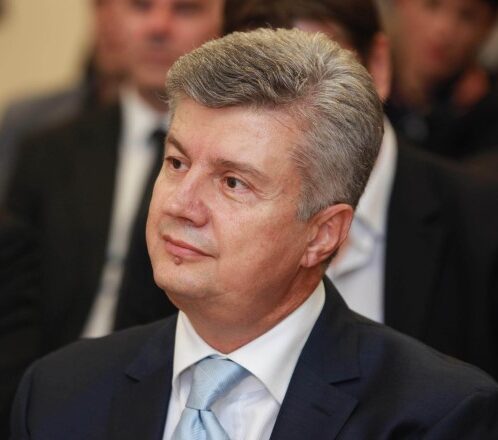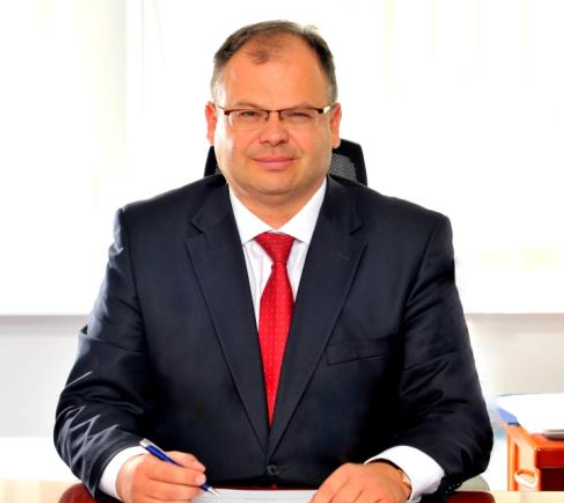The current crisis has prompted many governments to introduce unprecedented measures to contain the pandemic. These priority measures, which are imposed by a public health emergency, have left little room for other sectors – and this includes ensuring there is the appropriate funding for civil aviation. The Europe/North Atlantic (EUR/NAT) Regions are no exception. We have not only created awareness about this challenge but now have a specific mandate to deliver on it, as set by the Directors General of Civil Aviation Authorities (CAAs) from the Regions.

Our interest in the financial challenges faced by CAAs goes back to the DGCA meeting in 2019; but COVID-19 has amplified it. This is why the ICAO EUR/NAT Office held a Workshop on Sustainable Funding of States’ Civil Aviation Authorities on 29 September 2020. One hundred and thirty-six participants from 37 States, five European organizations (EC, EASA, EUROCONTROL, IAC, and ECAC), and seven international and industry organizations (IATA, CANSO, ACI Europe, IFATCA, IFAIMA, European Express Association, and AviaSafety) attended this virtual Workshop.
The discussions focused on the challenges that CAAs face for their safety, security and economic oversight functions during the COVID-19 crisis, with presentations made by several States on the best practices and lessons learned so far and on how a cooperative and collaborative approach with industry, regional and international organizations, including RSOOs during the crisis, can provide effective solutions along the way.
Following the Workshop, as included in our anticipated strategy for this topic in 2020, the DGCA Virtual Meeting was organized on 20 October. During this meeting, the eight conclusions produced at the Workshop, were discussed, approved and now form, collectively, a new area for our Office to work on. States understand that the EUR/NAT Regions need a series of new initiatives and activities to be established on the sustainable funding of CAAs in order to move forward and help solve some of the issues that require urgent actions.
Our Regional Office accepted the challenge to develop a survey, tools, financial framework assessments, model proposals, and newly identified best practices on Sustainable Funding for CAAs, to be further considered and deployed in order to fulfill this urgent mandate that we have been given. We are standing by the States and are committed to providing further assistance moving forward.
1. DGCA Virtual Meeting 20 October 2020: Outcomes & Action Plan
The first session of the agenda began with the EUR/NAT presentation on the outcomes and conclusions gathered during the Sustainable Funding for CAAs Workshop. During this session, States discussed and approved the conclusions of the Sustainable Funding for CAAs Workshop and provided the ICAO EUR/NAT Office with guidance on the actions to be delivered in 2021.
The table below contains the conclusions and actions that are to be taken. Some were completed at the end of 2020; the majority were to be achieved in 2021. Both the Workshop and DGCA Virtual meeting were an excellent start – the presentations, knowledge sharing and active engagement of States during the meeting provided fresh impetus for action on this important issue.
This article will present the work currently being carried out by Italy, Montenegro, Poland, United Kingdom, and the Ukraine. Their different profiles, phases, and approaches serve as an example of what the EUR/NAT Office expects to compile and share as best practices when more States begin to participate once the survey and tools are developed and deployed this year.
2. DGCA Meeting Conclusions and EUR/NAT Action Plan for 2020/2021
The following events/activities were planned in 2021:
- Release of the dedicated Survey on Sustainable Financing of States’ Civil Aviation Authorities Oversight for the EUR/NAT Region (February 2021); and
- Webinar: Sustainable Financing of CAAs (March 2021)
The cases and experiences shared by some of our Civil Aviation Authorities at the September Workshop were interesting and revealing of their trust and willingness to share best practices. Their presentations described the actions, figures, and solutions that they built over these last months when our sector was so drastically impacted are shared below. The input obtained from the Survey, planned to be launched in Q1 in 2021, will seek to gather similar profiles and level of information from all fifty-six (56) EUR/NAT States. The idea is to bring all this knowledge together in one document as a “Best Practices Manual on Sustainable Funding of CAAs Oversight Capacity in the EUR/NAT Regions”.
Italy | CAA Funding
Introduction
Ensuring sustainable funding of the activities related to the main oversight responsibilities of CAAs is an issue that an increasing number of States are facing. Regardless of the form of ownership of the civil aviation in each State, limited financial resources dedicated to these activities means, in some cases, a decrease of aviation safety and security levels or the inability for CAAs to address the needs of the air transport sector.

The ongoing COVID-19 crisis has made this problem even more acute. In this context, ICAO considers that cooperation, raising awareness, and sharing information on policies and best practices represents an opportunity to discuss a way forward and identify further actions to develop capacity within States. CAAs have various financing mechanisms, the Italian model represents a mixed and balanced approach that ensures adequate financial resources for the fulfillment of oversight responsibilities.
The Italian CAA is a public body under the supervision of the Italian Ministry of Transport and Infrastructure, established by Law Decree n. 250 on July 1997. The CAA has regulatory, organizational, administrative, capital, accounting, and financial autonomy. Its main functions, as well as its organizational structure and its financing sources, are set in the above-mentioned Decree and in the statute. Furthermore, the Fees Regulation sets out fees from services provided by the Italian CAA to airport operators (e.g. project approval and testing of new airport infrastructures; licensing; certifications), maintenance and repair stations, air operators, air navigation service providers, etc. Financing resources are used to run the CAA administration and to fulfill tasks assigned, including oversight responsibilities.
Current Status
The main financing sources are represented by:
- fees from airport management concessions (about 67% in 2019);
- State funding for the execution of institutional tasks (about 16% in 2019);
- fees from services provided to airport operators; maintenance and repair stations; air operators; air navigation service providers, etc. (about 14% in 2019);
- route and terminal charges – share transferred by ENAV S.p.a. (about 2.5% in 2019);
- certification and documentation fees to professional bodies – e.g. crew members; income from immovable property; interests on loans (about 1% in 2019).
Challenges with funding
Diversification of financing sources has so far ensured sustainability and effective functioning of the Italian CAA since the onset of the COVID-19 crisis. However, revenue from airport management concessions fees for 2020 registered a reduction since the Italian CAA agreed with the Italian Ministry of Transport to allow airport management companies to defer the payment due in July 2020 to one single payment in January 2021. Thus, the annual concession fee is calculated using the actual 2020 traffic flow.
Next Steps
The COVID-19 pandemic has caused a dramatic drop in air traffic leaving the CAAs that are financed exclusively by one source of funding (e.g. the tax paid by departing passengers) to tackle the issue of limited financial resources. One way forward is to recommend each State implement a CAA financing system based on the diversification of sources of funding. A CAA’s financing system should include financial resources allocated from the government, while maintaining the required independence of the CAA from the national government, as well as self-financing themselves.
Diversification of sources of funding enhances resilience to crisis or to market shocks and ensures sustainability and capability of the Authority in the long term.
Montenegro | CAA Funding
The funds for the conduct and development of Agency activities are provided partially from route and terminal charges; income from the issuance of licenses; certificates; confirmations; licenses; and annual fees; partially from the charges paid by all departing passengers in civil air traffic; and partially from the charges paid by air carriers per tonne of cargo carried in civil air traffic.

The pandemic has had serious financial repercussions on the aviation industry. It is clear that in this moment we are witness to the drastic reduction in air transport that has caused significant losses for airlines. When there are no flights, the airports experience losses due to lack of income. They will have to terminate the employment contracts of their personnel, which will result in a decrease in their performance and efficiency, as well as in potential delays of flights. The airlines are facing the same problems; they are not able to pay route charges or terminal charges.
The functioning of Air Navigation Service Providers (ANSPs) and National Supervisory Authorities (NSAs) is brought into question since these are their significant sources of income. At the same time, contributions that the countries pay to ICAO, EUROCONTROL, EASA and ECAC are also in question.
It is very challenging to make plans for the future in the current situation. I think that the European Commission could set up a special aid fund for the Aviation Industry, as one of the driving forces of the economy of the European Union. This fund could provide short-term and long-term financial support to the aviation industry in order to initiate the process of accelerated recovery and consolidation of the aviation industry in the short term after the COVID-19 pandemic has subsided.
The beneficiaries of this fund would be primarily airlines and airport operators, while ANSPs and NSAs would also have the right to use finances from the fund. EASA, EUROCONTROL and ECAC would also have the right to use funding in order to overcome financial liquidity problems on a short-term basis.
In addition to the EU Member States, the right to use the finances from this fund would also apply to Non-EU countries that are signatories to the European Common Aviation Area (ECAA) Agreement. Now is the time for solidarity!
Poland | CAA Funding
Sustainable financing of the National Aviation Administration is a key requirement for an effective aviation oversight system in each country. In the case of Poland, the CAA is part of the national administration system, responsible for aviation oversight in terms of safety, security, drafting legal acts, and negotiating international air transport agreements.

The Polish CAA is managed by the President of the CAA who also serves as the Director General of Civil Aviation. Although the CAA is an independent body, it is supervised by the Ministry of Infrastructure and therefore its President reports directly to the Minister.
At present, the Polish CAA is financed by:
- The State budget, which covers 70% of the CAA’s budget;
- An ANSP fee constituting 17% of the CAA’s budget; and
- Operators’ fees for issuing licenses and administrative decisions covering 13% of the CAA’s budget.
Such a financing structure, where the majority of the CAA’s budget is covered by the State budget, was insufficient during the dynamic growth of the aviation sector (2010-2019). It did not allow the CAA to recruit and keep the best professionals on the market who, having gained the necessary experience and knowledge, preferred working for private entities offering them much better financial conditions.
There was an indispensable need to develop a new mechanism in which the CAA, in addition to the State budget, would also be financed by fees per departing passenger which would cover the oversight expenses of the CAA. The fee would depend on the level of State financing and would be established at a level between 20 eurocents and 1 euro.
Unfortunately, the pandemic caused the suspension of the transformation actions. Nevertheless, the CAA plans to return to this project after the crisis as the present mechanism will again be insufficient when the market starts to grow in the future. Only fully diversified sources of financing (a mixture of the State budget, passenger and ANSP fees) can provide a truly sustainable financing of the CAA – both, during market prosperity and during a recession.
United Kingdom | CAA Funding
Introduction
The CAA is the UK’s independent aviation regulator and was established by Parliament in 1972. It is a multi-function regulator with several statutory duties – these are set out in primary legislation. The legal framework for how the CAA is funded is set out in the Civil Aviation Act of 1982. The main source of funding are charges that are levied on the Aviation Industry for various regulatory activities.

Section 8 of the Civil Aviation Act 1982 states: ‘It shall be the duty of the CAA so to conduct its affairs as to secure that its revenue …is not less than sufficient to meet charges properly chargeable to revenue account’.
Section 11 sets out: ‘The CAA may… make a scheme for determining the charges which are to be paid to the CAA in respect of the performance of such of its functions as are specified in the scheme’.
In effect, these give the CAA the responsibility to ensure it has adequate funding to carry out its duties, and also the powers to raise funds.
Current status
In normal times, over two-thirds of the CAA’s income is variable, and is linked to industry activity, and/or passenger volumes. The Department for Transport (DfT) also provides some funding through grants (this is allowed under Section 12 and 16 of the Civil Aviation Act 1982) for work that DfT asks the CAA to carry out. In 2019, this accounted for 5% of the CAA’s income.
The COVID-19 crisis has had a negative impact on the CAA’s finances. In response, the DfT provided funding to ensure the CAA had adequate resources to carry out its regulatory activities for the rest of the financial year.
Challenges of funding
There is a challenge around how the CAA, given its current funding model, can ensure that it is able to meet expectations around how it delivers its services, modernizes its processes, and meets service delivery standards. Funding is heavily reliant on justifying to a hard-pressed industry that the CAA’s costs relate to regulatory oversight, while the CAA’s users and stakeholders expect the CAA to meet modern standards of service delivery – which can often require significant upfront and long-term investment (for example in digital systems) and can be hard to justify. This can lead to a situation where the CAA finds itself behind the curve.
The longer-term challenges center around the CAA’s Scheme of Charges. Not only is it considered very complex, with over 1,317 separate types of charges, but the COVID-19 crisis has exposed how reliant the CAA is on income that is variable and linked to aviation demand.
Next steps
Although the DfT and the CAA do not feel now is the right time to change how the CAA is funded, the CAA is preparing a medium-term financial strategy, which will include reviewing and agreeing on the guiding design principles for changes to the CAA charging model and consider a realistic timetable for developing detailed proposals and an engagement plan with the aviation sector.
Ukraine | CAA Funding
Since the Ukraine became an independent State in 1991, a number of actions have been taken by the Ukrainian Government aimed at creating a strong and sustainable organization which would be responsible for the safety of civil aviation in Ukraine. This goal has always been in line with the ambitions of Ukraine to be represented adequately in the international aviation family.

The Order of the President of Ukraine #217/92 dated 30.12.1992 “Actions necessary for the civil aviation international activities”, followed by the Decree of the Cabinet of Ministers of Ukraine #819 dated 28.09.1993 “On creation of the State Specialized Fund for Financing National Expenditure on Aviation Activities and the Participation of Ukraine in International Aviation Organizations” have created the necessary background for further sustainable development of the Ukrainian CAA. Later on, when the Air Code of Ukraine was adopted in 2011, the name of the abovementioned Fund was included in it, prescribing that the main source of financing of the Ukrainian CAA comes from this Fund.
Other important changes were implemented with relation to this Fund in 2020. The Law of Ukraine which introduced changes to the Air Code of Ukraine was passed on 13.07.2020 under #759-IX. Mentioned changes have stipulated the provisions regarding the passengers and cargo fees in the Air Code of Ukraine (previously they were defined by the Decree of the Cabinet of Ministers of Ukraine). Such changes have brought the status of the Fund and its specific provisions to a higher legal level.
The purpose of the Fund is to maintain stable functioning of the Ukrainian CAA, such as:
- Safety oversight;
- Security oversight;
- Economic oversight;
- Regulatory and policy-making functions;
- Airspace utilization management;
- Certification, licensing, and further assistance to the civil aviation entities;
- Representation in Ukraine in the civil aviation organizations.
The main sources of the Fund are:
- Certification and Registration of the civil aviation entities (including ANSP) and their continuous support;
- Licensing and other services provided by the State Aviation Administration of Ukraine (SAAU);
- State fees for international passenger air services operations which start from Ukraine (2 USD for each departing passenger);
- State fees for domestic passenger air services operations (0.5 USD for each departing passenger);
- State fees for domestic cargo air services operation (2.5 USD for each tonne);
- State fees for international cargo air services operation (10 USD for each tonne).
Though all the income to the Fund is considered part of the State budget, only 20% of it can be used for general State purposes and 80% is reserved for the needs of the Ukrainian CAA. As we look at the share of the income to the Fund, we can see that a little more than 80% of the income to the Fund comes from international passenger fees, 16% comes from certification, registration and continuous support services along with other related charges and the remaining 4% comes from the so-called cargo fees. It is worth mentioning that passenger and cargo fees are collected based on reports from the airports where all necessary figures can be seen. Later on, respective invoices are sent to the air carriers as they are responsible for the collection of these fees from passengers and cargo.
Air carriers’ responsibilities
The recent updates to the Ukrainian legislation have introduced the responsibility of air carriers that collect those fees. In the case that an air carrier fails to transfer collected fees to the Fund on time, the Ukrainian CAA has the legal right (and is obliged) to refuse the mentioned air carrier in terms of provision of necessary operational services until the debt is paid in full (certification procedures, requests for traffic rights etc.). This provision will stimulate air carriers not to postpone their payments, especially considering that these funds are only being collected from the air carriers for the State budget and are not for operational usage. The sustainable functioning of the Ukrainian CAA and its ability to maintain an adequate and acceptable level of safety is crucial for everyone in civil aviation and therefore we believe that a relationship of trust and respect between the CAA and air carriers is essential.
In summary, it is important to mention one thing. The existence of such a Fund gives a certain level of independence from the traditional Government financing and the ability to rely more on the market and traffic growth rather than on the financial capacity of the Government. Therefore, in this case, traffic growth and related increase of the oversight activities can be proportionally addressed. However, the COVID-19 crisis has shown that a drastic downturn in the traffic will hit this financing approach very hard and therefore further diversification of the income sources has to be considered by Ukraine and other States.


